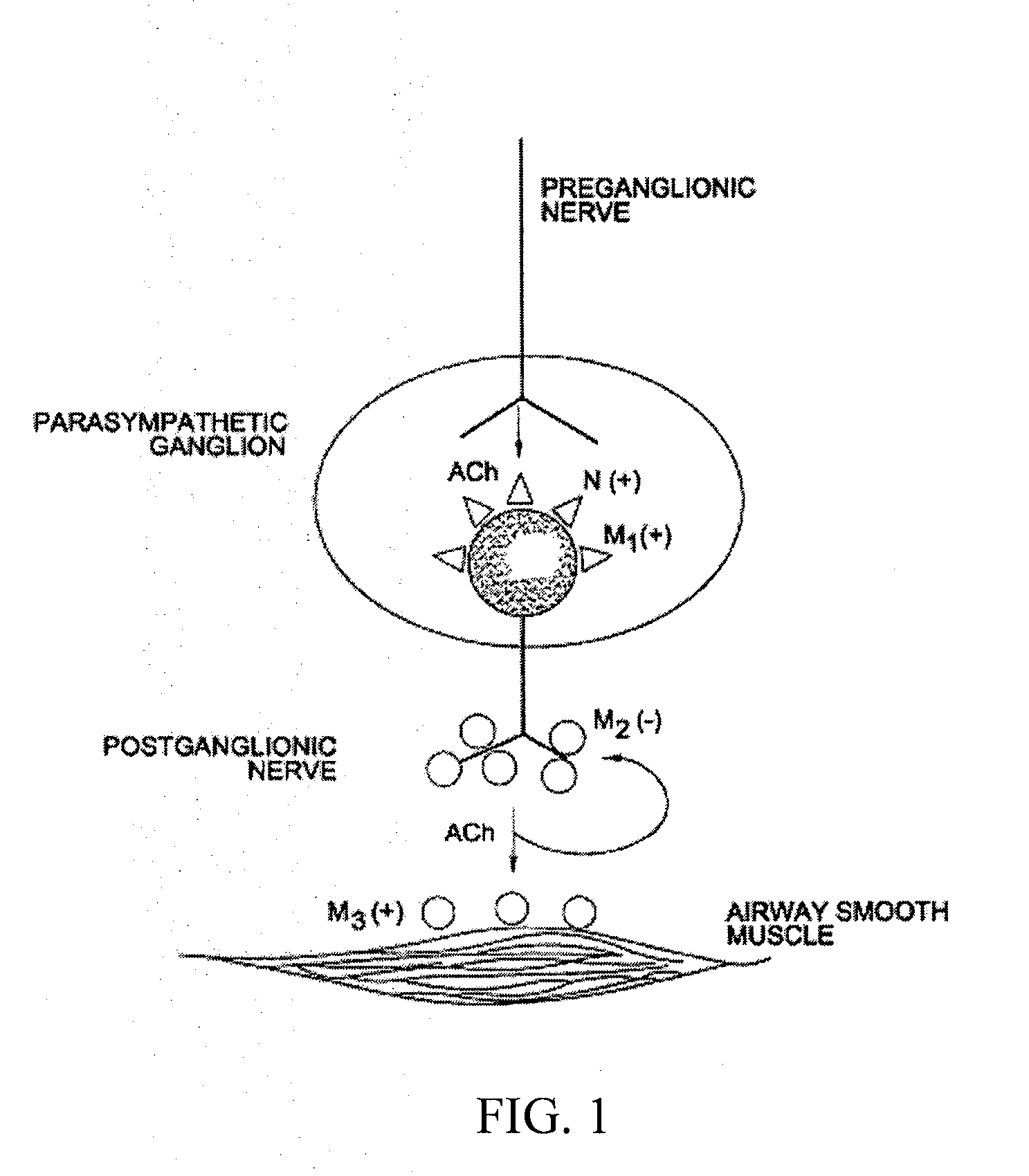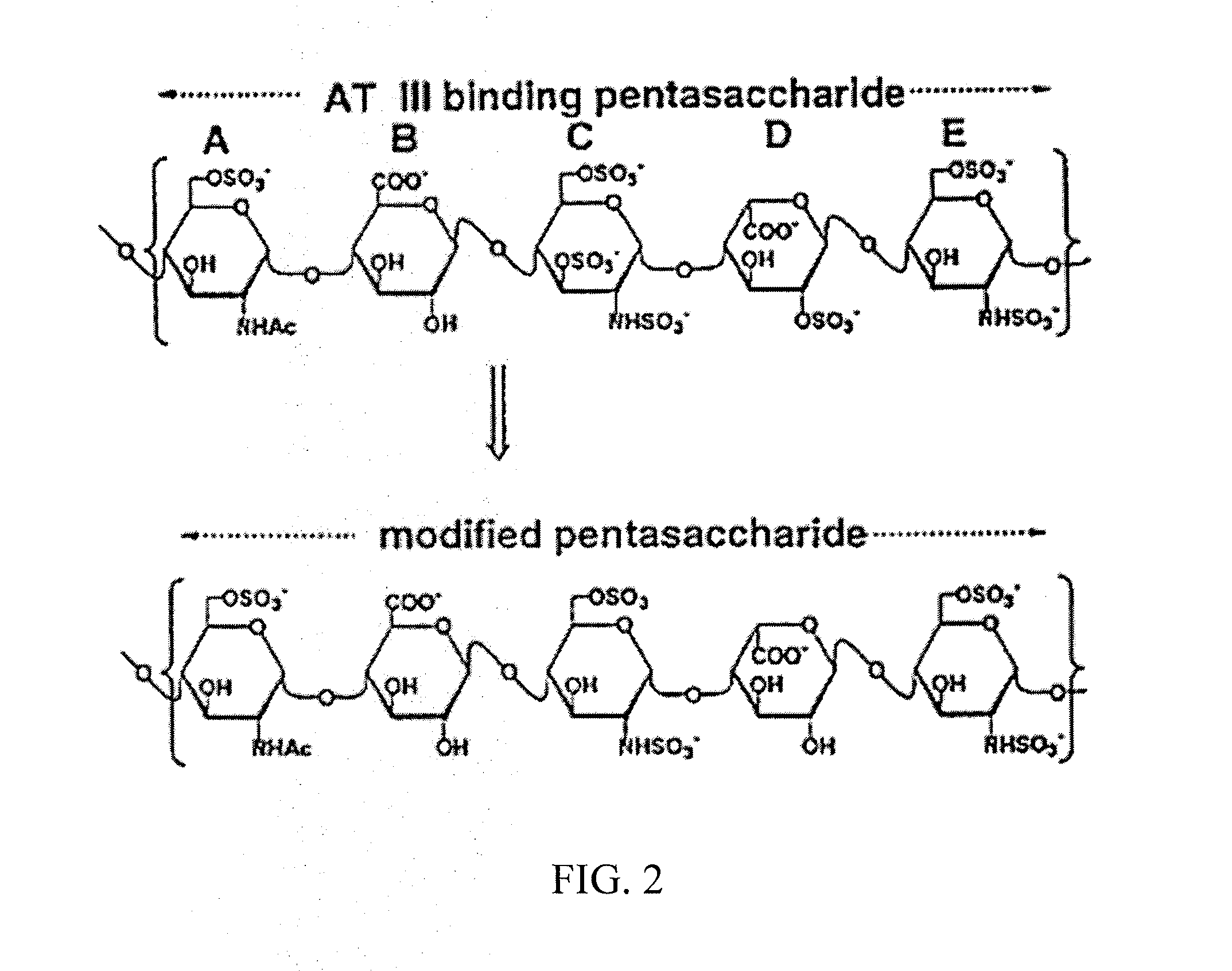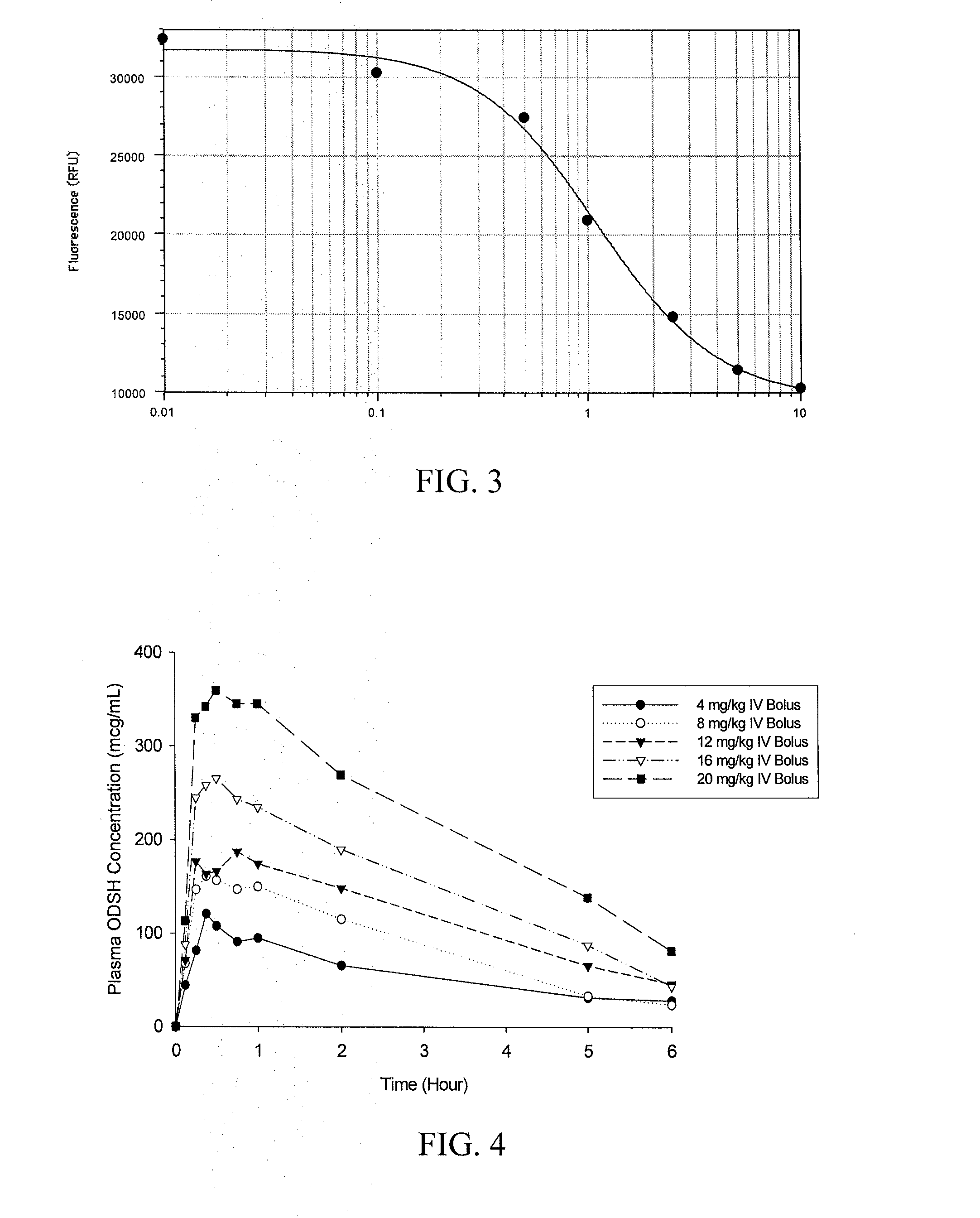Methods of treating acute exacerbations of chronic obstructive pulmonary disease
- Summary
- Abstract
- Description
- Claims
- Application Information
AI Technical Summary
Benefits of technology
Problems solved by technology
Method used
Image
Examples
example 1
Inhibition of P-Selectin-Mediated Attachment of Human Monocytes by 2-O, 3-O Desulfated Heparin
[0149]To study the effect of 2-O, 3-O desulfated heparin on P-selectin mediated attachment of inflammatory phagocytes to surfaces, the ability of U937 human monocytes to attach to P-selectin immobilized on plastic microtiter plates was analyzed. U937 cells were used because they demonstrate the same P-selectin dependent vascular rolling as human neutrophils but, unlike neutrophils, can be cultured as a uniform cell line in tissue culture conditions.
[0150]High-bind microtiter plastic plates were coated with 8 μg / ml of protein A in 0.2M carbonate-bicarbonate buffer, pH 9.4 (50 μl / well). Plates were washed with phosphate buffered saline containing 1% bovine serum albumin (PBS-BSA) before plates were coated with a P-Selectin-Fc chimera (R&D Systems, Minneapolis, Minn.). Fifty μL of P-Selectin-Fc (1 μg) was added to each well and incubated for 2 hours at room temperature. Following incubation, w...
example 2
Safe, Intravenous Bolus Administration of 2-O, 3-O Desulfated Heparin to Humans
[0153]A study was performed in 38 volunteer human subjects to assess the effects of escalating bolus doses of 2-O, 3-O desulfated heparin. The study was a Phase I, randomized, double-blind, dose-escalation study with a single-day treatment period. Subjects were between the ages of 18 and 45, were not pregnant, and were normal in body weight. They all had normal coagulation function and hemoglobin values at baseline.
[0154]Doses within treatment groups were not escalated, and subjects received a single intravenous dose of O-desulfated heparin over 15 minutes of either active drug or placebo. Two subjects also received an injection of fully anticoagulated unfractionated heparin for comparison. O-desulfated heparin dose groups were run in a series, and safety and tolerance data were evaluated prior to the start of the next dose level (4, 8 12, 16 and 20 mg / kg bolus intravenous doses). Twenty eight (28) subjec...
example 3
Safe Intravenous Bolus Administration and 12 Hour Infusion of 2-O, 3-O Desulfated Heparin to Normal Humans
[0171]A study was performed in twenty-four (24) healthy adult subjects to assess the effects of a bolus dose and 12 hour infusion of 2-O, 3-O desulfated heparin. The study was a Phase I, randomized, double-blind, dose escalation study with single-day treatment periods. Subjects were males between the ages of 18 and 45, and were normal in body weight. They all had normal coagulation function and hemoglobin values at baseline. Doses within treatment group were not escalated, and subjects received either active drug (O-desulfated heparin) or placebo treatment. Eighteen (18) subjects were randomized to receive O-desulfated heparin and six (6) subjects were randomized to receive placebo. Subjects received either O-desulfated heparin or placebo as described below in Table 9.
TABLE 9Continuous InfusionActive / PlaceboBolus ODSHODSHGroupnRatio(mg / kg)(mg / kg / 12 hr)122:0847.5264:2824386:28324...
PUM
| Property | Measurement | Unit |
|---|---|---|
| Fraction | aaaaa | aaaaa |
| Fraction | aaaaa | aaaaa |
| Fraction | aaaaa | aaaaa |
Abstract
Description
Claims
Application Information
 Login to View More
Login to View More - R&D
- Intellectual Property
- Life Sciences
- Materials
- Tech Scout
- Unparalleled Data Quality
- Higher Quality Content
- 60% Fewer Hallucinations
Browse by: Latest US Patents, China's latest patents, Technical Efficacy Thesaurus, Application Domain, Technology Topic, Popular Technical Reports.
© 2025 PatSnap. All rights reserved.Legal|Privacy policy|Modern Slavery Act Transparency Statement|Sitemap|About US| Contact US: help@patsnap.com



